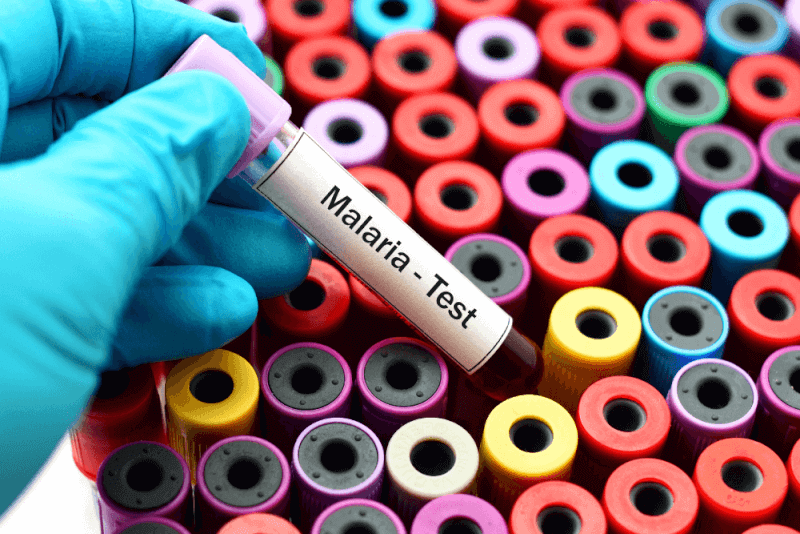What is cholera?
Cholera, a bacterial disease, is usually transmitted through contaminated water. Cholera, which causes severe dehydration, can be fatal within hours even for healthy people if left untreated. Modern sewage and water treatment systems have virtually eliminated cholera, especially in industrialized countries. However, there is still a risk of cholera outbreaks in regions such as Southeast Asia, Africa and Haiti. Cholera is easily treatable. In its treatment, simple solutions are applied to prevent severe destinations.
Cholera diagnostic criteria
In areas where cholera symptoms are common, cholera is diagnosed based on the symptoms that patients have, but the only way to confirm the diagnosis is to identify the specific bacteria in a stool sample. Rapid cholera dipstick tests are used for this. Rapid confirmatory testing reduces initial mortality and helps contain the outbreak.
Causes of cholera
The bacterium that causes cholera is called Vibrio cholerae. The disease is fatal because the bacteria produce toxins in the small intestine. These toxins cause the body to release huge amounts of water. The secreted water causes diarrhea and rapid loss of fluids and electrolytes.
Not all people exposed to the cholera bacteria get sick. However, feces from uninfected people can contaminate food and water supplies. Contaminated water is the main source of cholera infection. In particular, the following sources are most likely to contain cholera bacteria.
- Contaminated public wells are the most common sources of large-scale cholera outbreaks. Especially those living in crowded conditions without adequate hygiene conditions are at risk.
- Raw or undercooked seafood from certain places can expose you to cholera bacteria. Shellfish in particular pose the greatest risk.
- In areas with cholera, raw unpeeled fruits and vegetables are the most common source of cholera infection. In developing countries, crops in irrigation water fields containing non-composted fertilizers and raw sewage can be contaminated.
- In areas where cholera is widespread, millet and rice that are contaminated after cooking and left at room temperature for a few hours cause the growth of cholera bacteria.
Cholera risk factors
Everyone is susceptible to cholera, except those who have already been immunized from breastfeeding mothers. However, some factors make people more vulnerable to the disease and more likely to have more severe symptoms. Risk factors for cholera include the following.
- Cholera is more likely to develop in environments where it is difficult to maintain a hygienic environment, including a safe water supply. For this reason, cholera is more common in countries with poverty and famine, refugee camps, and areas affected by war or natural disasters.
- Cholera bacteria cannot survive in an acidic environment. For this reason, stomach acid often acts as a defense against infection. However, older adults, children and people taking medicines that suppress stomach acid lack this protection. Therefore, the risk of cholera is higher.
- Living in the same house as someone with cholera increases the risk of contracting cholera.
- Although the exact cause is unknown, people with blood group zero are twice as likely to contract cholera compared to people with other blood groups.
- Although there have been no large-scale cholera outbreaks in industrialized countries, eating shellfish from waters that harbor cholera bacteria greatly increases the risk.
Complications of cholera
Cholera is a serious disease that can cause rapid deaths. People who do not receive treatment can die from sepsis and shock hours or days after the first symptoms appear. Although severe dehydration and shock are the worst complications of cholera, it can also lead to other problems, such as
Low blood sugar
Blood sugar, the body's main source of energy, drops dangerously low because cholera patients become too sick to eat. This condition, called hypoglycemia, can cause loss of consciousness, seizures and death. Children are at greatest risk of low blood sugar.
Low potassium levels
With diarrhea caused by cholera, patients lose large amounts of minerals, including potassium, in their stools. A severe drop in potassium levels can affect heart and nerve function and pose a threat to life.
Kidney failure
When the kidneys lose their filtering ability, excessive amounts of fluid, waste and some electrolytes accumulate in the body. This is potentially life-threatening. In cholera patients, renal failure is often accompanied by shock.
Symptoms of cholera
Most people exposed to cholera bacteria do not get sick for 7 to 14 days. However, during this time, the bacteria infect other people through the contaminated water they spread. The first symptoms are difficult to distinguish from normal diarrhea. However, after a few days, more severe cholera symptoms appear. These symptoms include the following.
Diarrhea
Cholera-associated diarrhea occurs suddenly and causes a loss of about 1 liter of fluid per hour. Diarrhea caused by cholera usually has a pale milky appearance, similar to the water in which rice is rinsed.
Nausea and vomiting
Nausea and vomiting is a symptom that occurs in the early stages of cholera and can last for hours.
Destination
Signs of dehydration start to appear a few hours after the onset of cholera symptoms. Symptoms of dehydration can range from mild to severe and can cause a person to lose 10% or more of their body weight.
- Symptoms caused by dehydration include the following.
- Irritability
- Fatigue
- Collapsed eyes
- Dry mouth
- Excessive thirst
- Dry and wrinkled skin
- Little or no urination
- Low blood pressure
- Irregular heartbeat
Dehydration can also cause a rapid loss of minerals in our blood, which maintains the fluid balance in the body. This is called electrolyte imbalance. Symptoms of electrolyte imbalance include the following.
- Sodium
- Chloride
- Potassium
- Muscle cramps
One of the most serious complications of dehydration is shock (when shock causes low blood pressure and oxygen levels, the severe form of shock is called hypovolemic shock. Hypovolemic shock can cause the patient to die within minutes).
Cholera treatment methods
Cholera is one of the health conditions that require urgent treatment. Because it is a disease that can cause death within a few hours. The methods used in the treatment of cholera include the following.
Rehydration
The aim of rehydration is to replace lost fluids and electrolytes. There are oral rehydration salts, which are a simple rehydration solution. These solutions are in powder form that can be made with boiled or bottled water. Lack of rehabilitation treatment causes about half of cholera patients to die. Rehydration therapy reduces the mortality rate to less than 1%.
Intravenous fluids
A significant proportion of cholera patients come to the hospital when rehydration is not enough. However, severely dehydrated people should be given even intravenous fluids.
Antibiotics
Although not a necessary part of cholera treatment, some antibiotics can help reduce the diarrhea associated with cholera and shorten the duration of diarrhea in people with severe illness.
Zinc supplements
Studies show that zinc can reduce the importation of cholera, especially in children with cholera, and shorten the duration of diarrhea.
What are the transmission routes of cholera?
Cholera is transmitted through feces. It is spread by eating or drinking food or water contaminated with the feces of an infected person. For this reason, cholera outbreaks are more common in underdeveloped countries where there are no proper water sources and sewage systems. Cholera is unlikely to be passed directly from one person to another.








